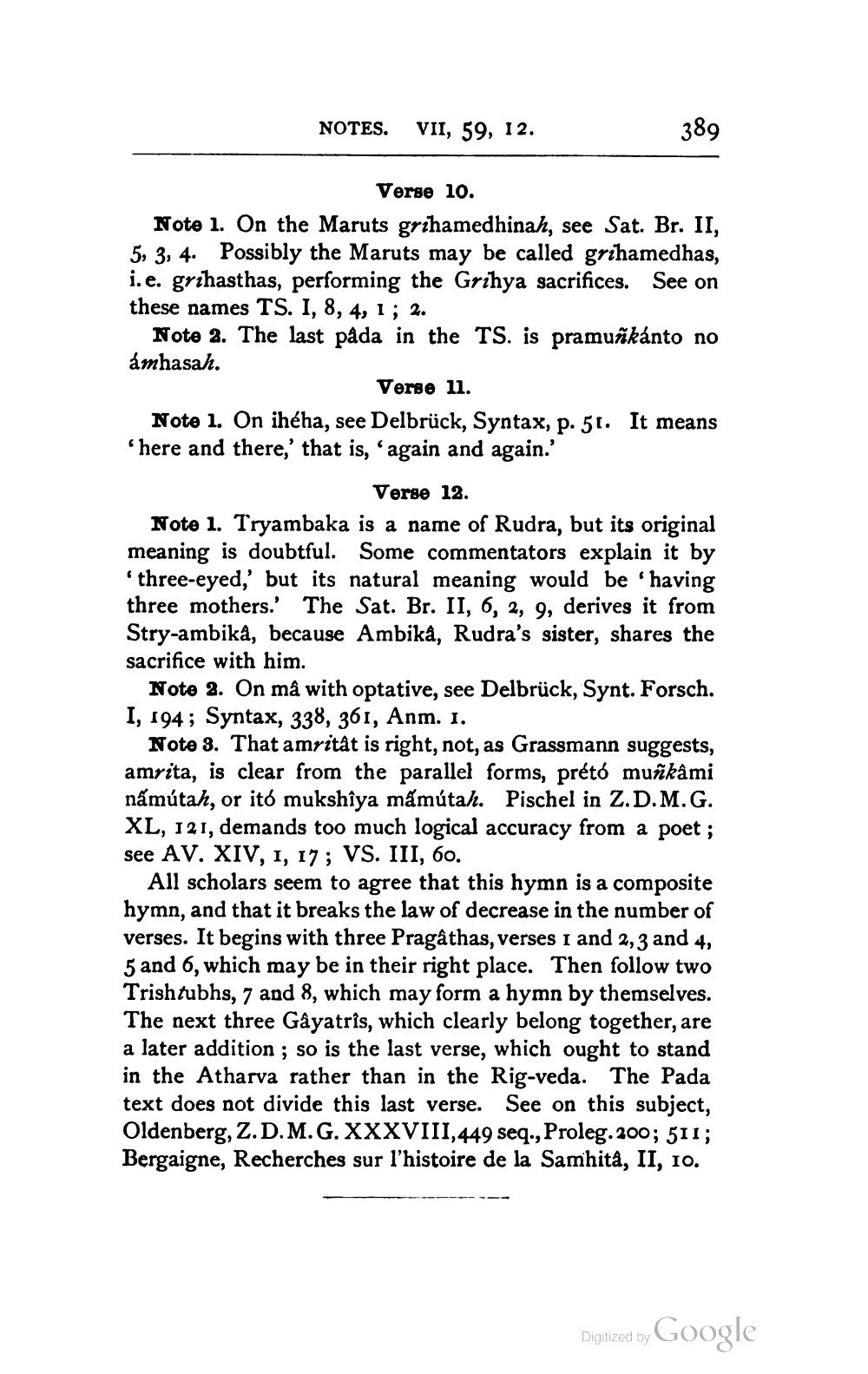________________
NOTES.
VII, 59, 12.
389
Verse 10. Note 1. On the Maruts grihamedhinah, see Sat. Br. II, 5, 3, 4. Possibly the Maruts may be called grihamedhas, i.e. grihasthas, performing the Grihya sacrifices. See on these names TS. I, 8, 4, 1 ; 2.
Note 2. The last pada in the TS. is pramuñkánto no amhasah.
Verse 11. Note 1. On ihéha, see Delbrück, Syntax, p. 51. It means 'here and there,' that is, again and again.'
Verse 12. Note 1. Tryambaka is a name of Rudra, but its original meaning is doubtful. Some commentators explain it by 'three-eyed, but its natural meaning would be 'having three mothers.' The Sat. Br. II, 6, 2, 9, derives it from Stry-ambika, because Ambika, Rudra's sister, shares the sacrifice with him.
Note 2. On mâ with optative, see Delbrück, Synt. Forsch. I, 194; Syntax, 338, 361, Anm. 1.
Note 3. That amrität is right, not, as Grassmann suggests, amrita, is clear from the parallel forms, prétó munkami námútah, or itó mukshîya mấmútah. Pischel in Z.D.M.G. XL, 121, demands too much logical accuracy from a poet ; see AV. XIV, 1, 17; VS. III, 60.
All scholars seem to agree that this hymn is a composite hymn, and that it breaks the law of decrease in the number of verses. It begins with three Pragathas, verses i and 2, 3 and 4, 5 and 6, which may be in their right place. Then follow two Trishtubhs, 7 and 8, which may form a hymn by themselves. The next three Gayatris, which clearly belong together, are a later addition ; so is the last verse, which ought to stand in the Atharva rather than in the Rig-veda. The Pada text does not divide this last verse. See on this subject, Oldenberg, Z.D.M.G. XXXVIII,449 seq., Proleg. 200; 511; Bergaigne, Recherches sur l'histoire de la Samhità, II, 10.
Digitized by
Digized by Google




